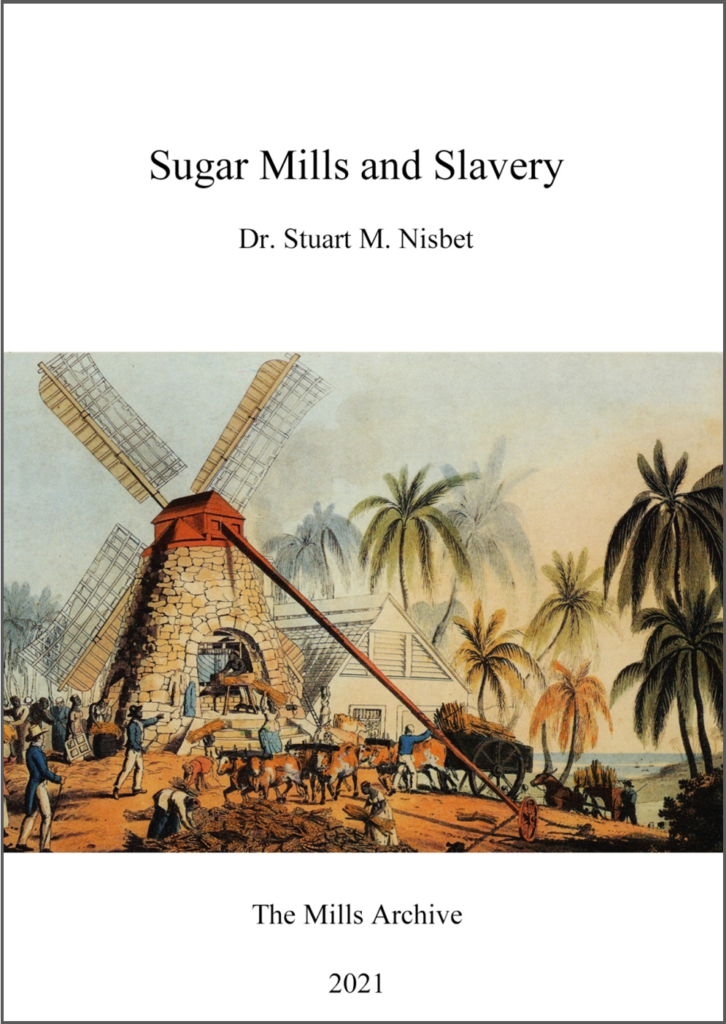Elizabeth Bartram
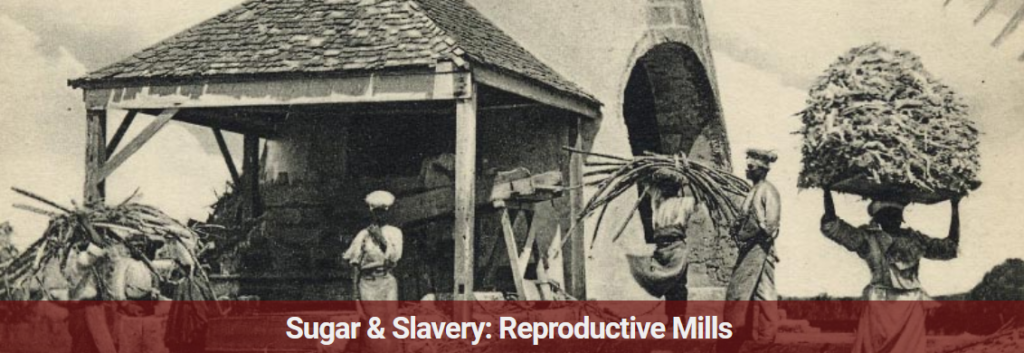
| Two months ago, I introduced our 13th Mills Archive Research Publication “Sugar Mills and Slavery” by Stuart Nisbet. The book has been well-received and there is now a digital edition (see below). At the same time, we curated an online exhibition “Sugar & Slavery: Reproductive Mills” that sheds light on the links between technological developments in sugar milling and enslaved women’s reproductive systems, especially in the early nineteenth-century. Using images from the Caribbean islands from the period of slavery and beyond it maps the transition of both women and machinery from ‘disposable’ to ‘vital’ in the eyes of enslavers. | |
| The human cost of sugar mills was high. Most general accounts of cane mills stress the physical hazards. The long shifts were necessary to keep the mill operating night and day. “Work on a sugar plantation was arduous and labour-intensive throughout the year but was particularly onerous at harvest time when the sugar works operated incessantly, with the workers organized in shifts to keep the operation going” (Richard Dunn, Sugar and Slaves: the rise of the planter class in the English West Indies, 1624-1713). It is still uncommon for the topics of slavery and the technology of the sugar mill to be brought together. In the 17th and much of the 18th century few in Britain questioned the morality of slavery. Growing opposition eventually led to the abolition of slave trading by British ships in 1807. However, it was not until 1834 that the ownership of enslaved people was banned in the British Empire. | |
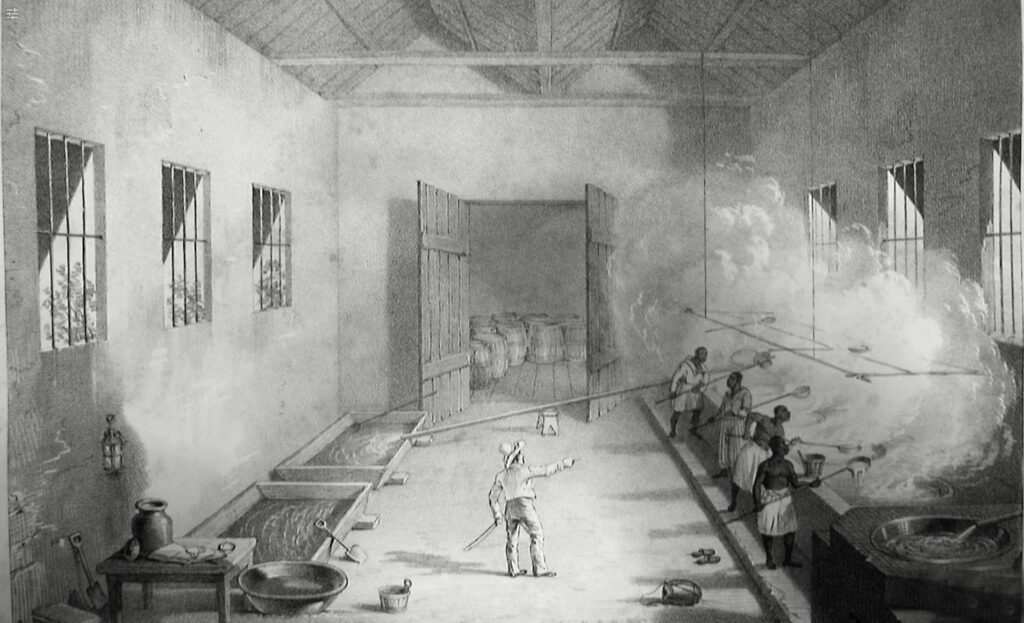
| The Nisbet book and the online exhibition gave us the opportunity to update the content of our library on sugar mills. Supported by a grant from one of our trustees, we have purchased many books and research publications that look beyond the milling machinery to the impact the industry had on the enslaved workforce. The library catalogue now lists our 84 publications here: https://new.millsarchive.org/search2/?class=PublicationInLibrary&match=all&criteria=Topic~equals~259 As with other topics, most of our books come from the collections we receive, and the 20 or so books and articles we had on sugar mills were largely published in the 40 years after the Second World War. | |

A good example is the detailed paper from the Newcomen Transactions for 1970 by Rex Wailes, “Windmills and steam power in Barbados”.
This paper was recently featured as one of our monthly articles about the Rex Wailes collection in the journal Milling & Grain.
| As with the story of sugar, the four decades since the 1980s have seen a revolution in the understanding of history and a determination to balance a Western European “colonial view” of our heritage with culturally more appropriate perspectives that are not distorted by unconscious biases that may result from more privileged positions. We support this trend and recognise our understanding is still incomplete. By seeking to take a balanced approach with sugar mills and slavery, the book, exhibition, and the enriched library are small contributions to greater awareness. Be warned, some of these publications make harrowing reading. | |
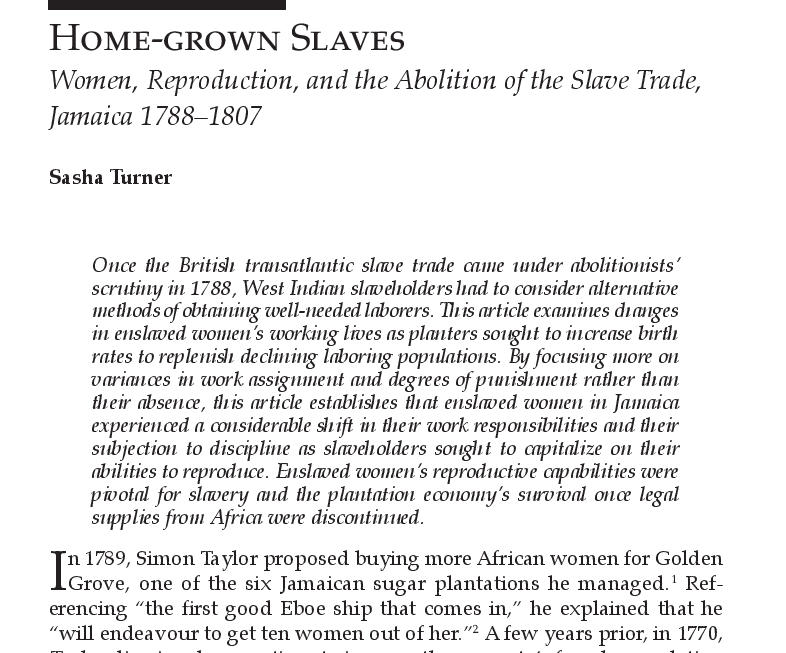
This glimpse of the academic paper “Home-grown Slaves: Women, Reproduction, and the Abolition of the Slave Trade, Jamaica 1788–1807” emphasises why we feel these stories are a vital part of our milling history, in the same way as the achievements of Henry Simon or Rex Wailes
| All library publications are available for reference at our Research and Education Centre in Reading. In addition, we are developing a digital library, which already includes 26 records of sugar-related interest. A number of these are available as PDFs to read online, free of charge. Copyright restrictions sometimes prevent us providing the full publication online but please contact us if you would like to read more. As an accredited archive we are often able to provide full digital copies for a small charge as a resource for research and private study. | |
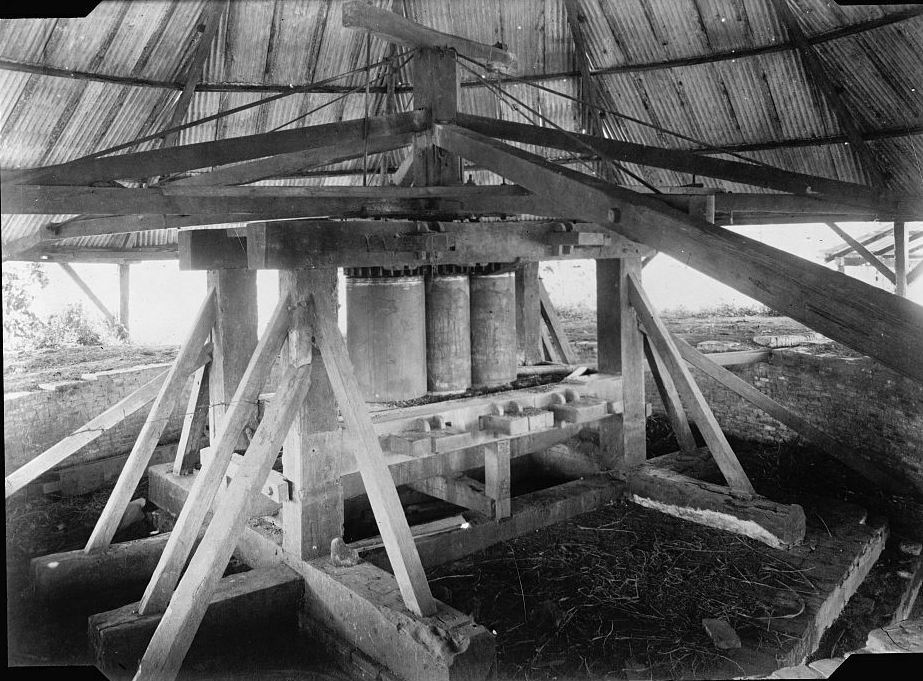
(Mildred Cookson Collection)
| Where copyright is restricted or unclear, we publish enough in the library catalogue for you to determine whether a full copy is worth requesting. For example, the entry for the unpublished paper “Windmills in the West Indies: Dutch entrepreneurs and the development of Barbados, 1621–1655” provides a downloadable introduction, and a list of its chapter headings. 1: Barbados prior to the English Colonization 2: England and the Dutch Republic in the Atlantic trade after 1600 3: Barbados: The colony and the Dutch 4: From Tobacco to Sugar 1627-1643 5: Sugar; The Dutch Bonanza 1643-1651 6: Paradise Lost 1651-1655 7: Conclusion 8: Appendix 1: Ships to Barbados 9: Appendix 2: Cargo exported from Barbados 10: Literature | |
| In February we offered a limited number of single copies of Stuart Nisbet’s book in return for a postage charge using nisb2020 as a discount coupon. This offer expires on 30 April: https://new.millsarchive.org/product/sugar-mills-and-slavery/. To help spread the word even further we now have a digital downloadable version: https://new.millsarchive.org/product/sugar-mills-and-slavery-pdf/ and the cost is less than the UK postage for the book! If this proves popular, we will consider making more digital publications available. | |


